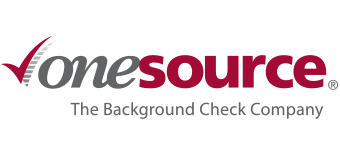Employment Background Checks After Hire: Why Rescreening Matters
Most HR managers are starting to think about planning for the new year. Setting goals, enhancing retention, and revisiting costs usually make the new year checklist. Though these are all important items to check off the list to start the new year on the right foot, rescreening current employees is an important consideration that often goes overlooked. According to a survey conducted by SHRM, only 15% of respondents said they rescreen employees annually—meaning that important information often goes unfound for employees who have been on the job for several years, leaving other employees and internal data vulnerable.
Rescreening current employees provides employers with updated employee information, helps maintain a safe workplace, and ensures current employees are still qualified for their roles. If it’s been a while since you conducted annual background checks, you may want to revisit your rescreening program to ensure it aligns with your vision moving into 2025. Let’s look at some changes employers might consider by rebooting annual employee rescreens.
Rescreening current employees where they are at
Remote work and relocation have proved to be more than just a trend. USPS change-of-address requests show that 28.3 million address changes were processed in 2023 alone– so if your background check program is only running broad searches for records in the places where employees previously lived or where they live currently, records could easily go unfound.
Do you have more employees working remotely in 2024 and plans for remote positions moving into the new year? You might consider expanding your criminal history checks to include more locations. This search can include additional counties in county-level background checks. You may also consider other ways to locate criminal records, such as statewide, federal, or national criminal database searches. Other sources, like driving record checks, may return important records that other background checks won’t find.
Other places to look when rescreening
Rescreening goes beyond where employees have lived and have moved to. What current employees are doing daily can uncover important insights that can significantly impact your business, too.
Social Media Checks
Many employers now use social media screenings to search publicly available online profiles. This check looks for potentially risky content posted by employees or candidates. A social media record screening looks at publicly available information on sites like Facebook, Twitter, Instagram, and others to glean character insights. You may uncover web content that is derogatory, hostile, coarse, or defamatory.
The reason employers might conduct social media screenings during their annual background checks are:
- They want to maintain a safe workplace and positive company culture.
- They want to avoid continued relationships with individuals that present a risk to their brand and bottom line.
- It meets employees where they may spend a lot of their time.
Driving Records
Although a lot of employees have relocated due to flexible remote work, many still drive daily as part of their jobs, creating potential risks for employers. In fact, car accidents are the leading cause of workplace deaths in the United States.
Due to the risks driving presents, employers often rescreen driving records even if it’s not a compliance requirement. Here are a few reasons employers choose to conduct regular driving rechecks on their employees:
- More control over driver safety and company reputation: Samba Safety shows that a history of negligent driving can increase the likelihood of a crash by 64%. The ability to act fast means that unsafe drivers can be suspended before it happens again if needed.
- Reduced administrative time: The same study from SambaSafety shows that employers save an average of $50,000 annually just from the time saved alone on manual rechecks – not to mention time filling out paperwork for accidents you never saw coming.
- Big savings: Employers with employees who drive as part of the job know that the cost of an accident, whether frequent or infrequent, can quickly outweigh the cost of automated driver monitoring. A study by The Network of Employers for Traffic Safety shows that U.S. employers lost $72.2 billion in 2019 alone to employee traffic accidents.
Social media and driving record checks are just two simple ways that employers can save overall and protect a company’s reputation. By modernizing your rescreening stack with new tools and types of background checks, you can uncover more relevant records and add a new layer of protection for your organization.
A new year calls for new technology
Rescreening current employees may sound like a lot of extra work, but a lot can happen over the years that turn quickly into safety issues and affect your bottom line, too.
The good news is that with the right team and technology on your side, rescreening doesn’t have to be such a hassle. Having the right processes, tools, and support upfront can make a major difference. If your company is adapting policies to how employees live and work, consider how you might adjust your background rescreening program. Do your checks line up to the amount of change your employees may have experienced over the year?
A new approach to background checks
Taking the time to reevaluate your needs and how you might improve empowers your hiring team to create the best version of your annual employee rescreening program. You might also feel more confident as you continue through the year!
Update your background screening program in 2024. Contact One Source today to learn more about getting started with post-hire rescreens.
